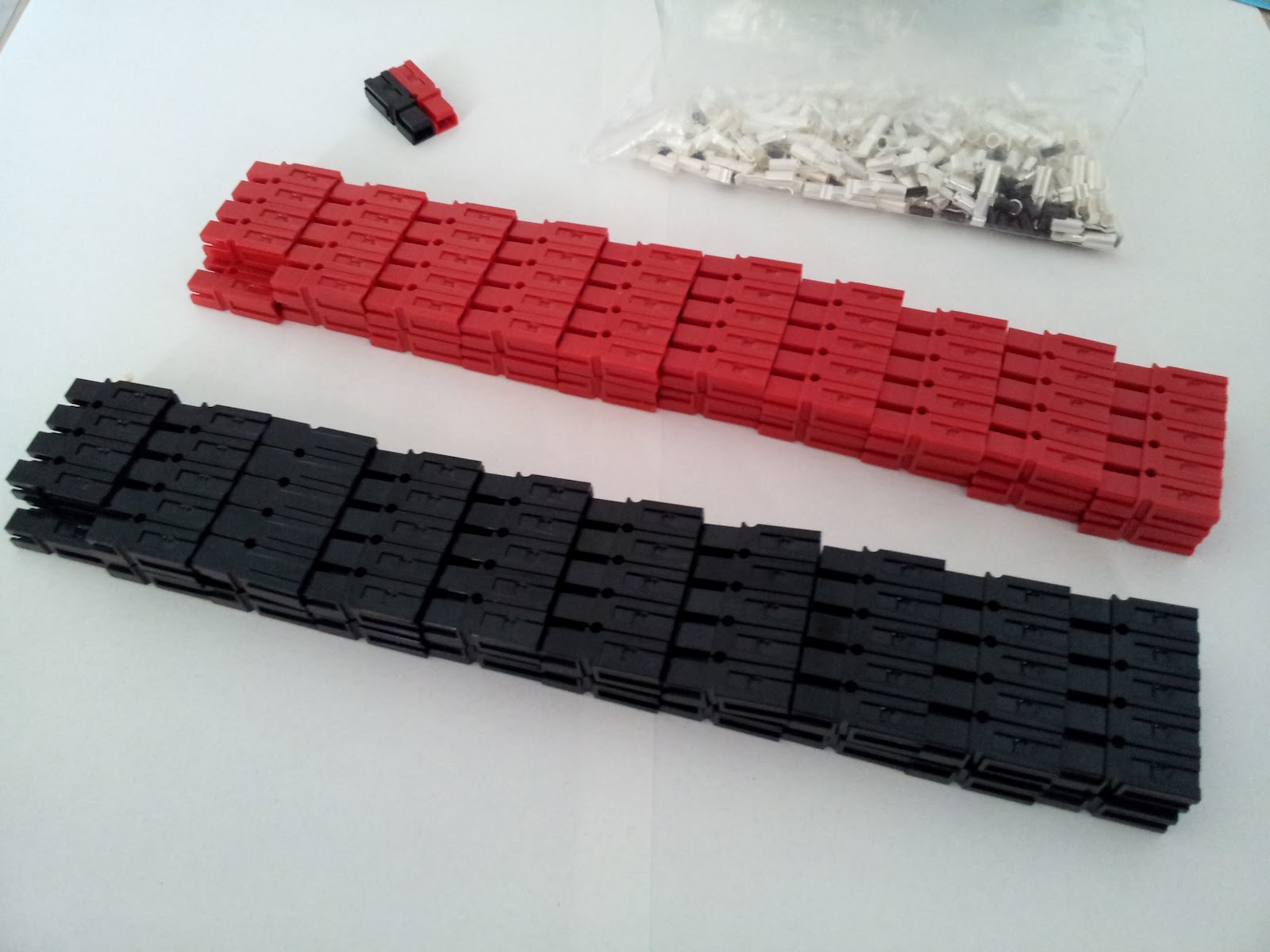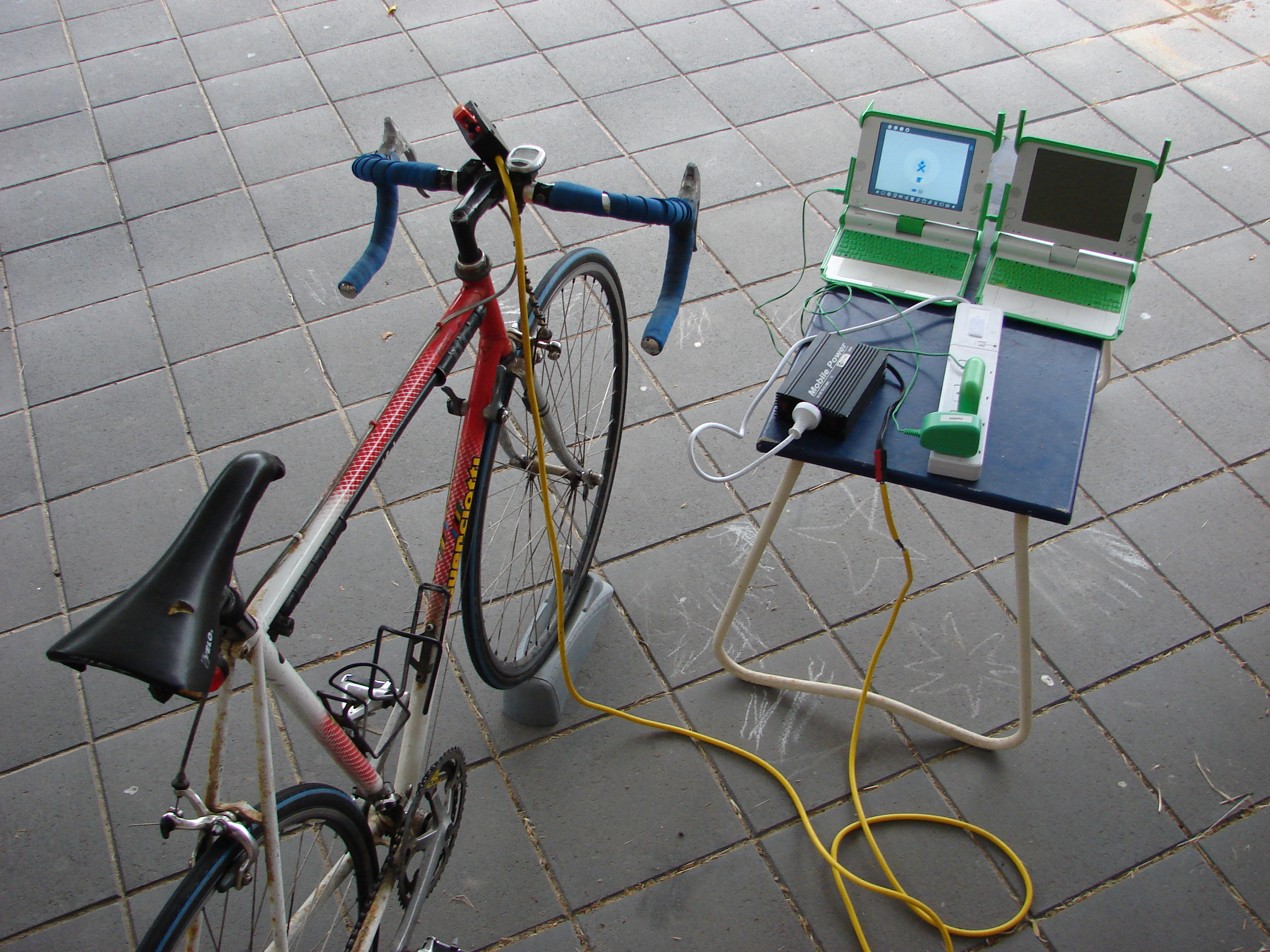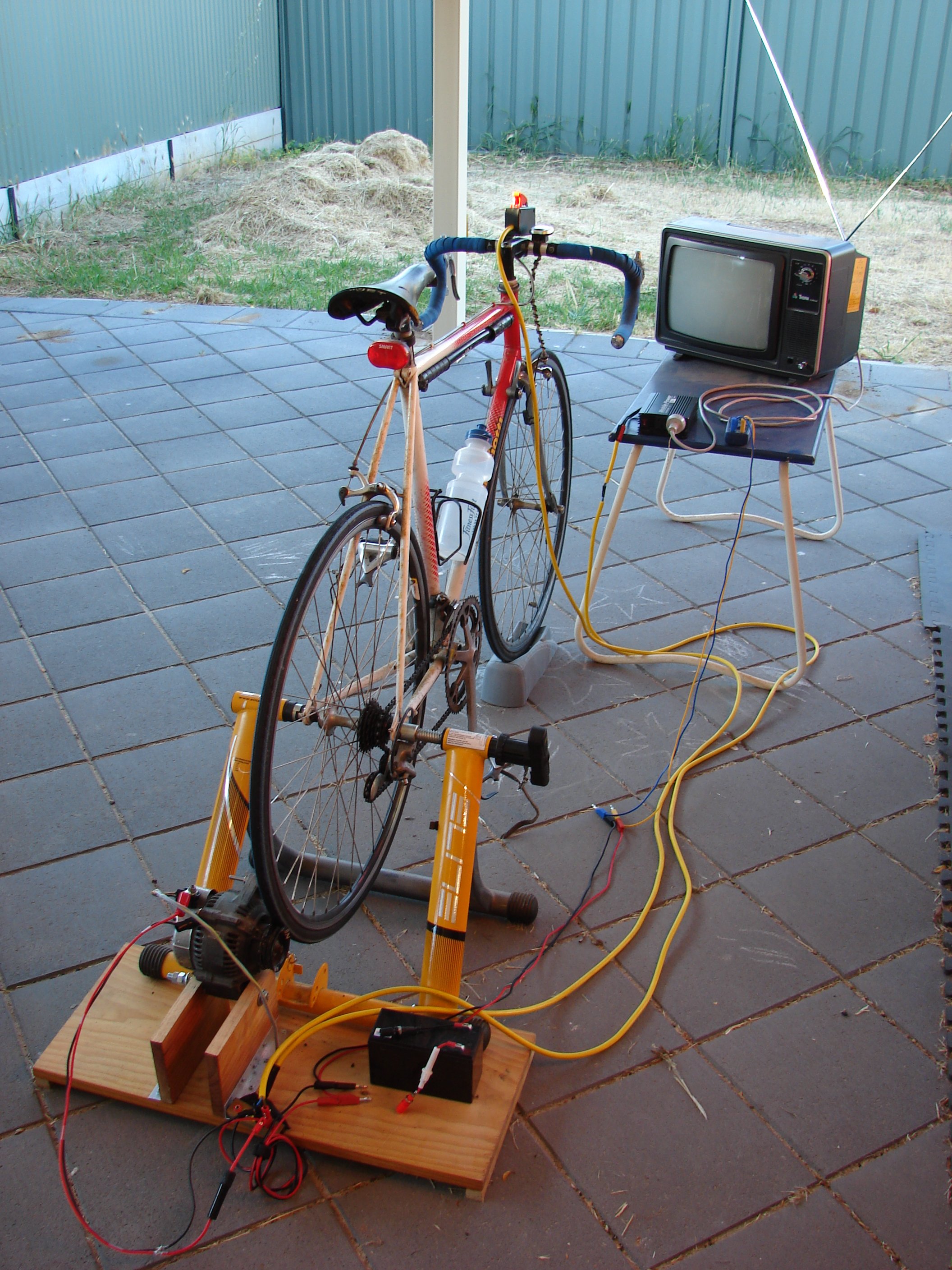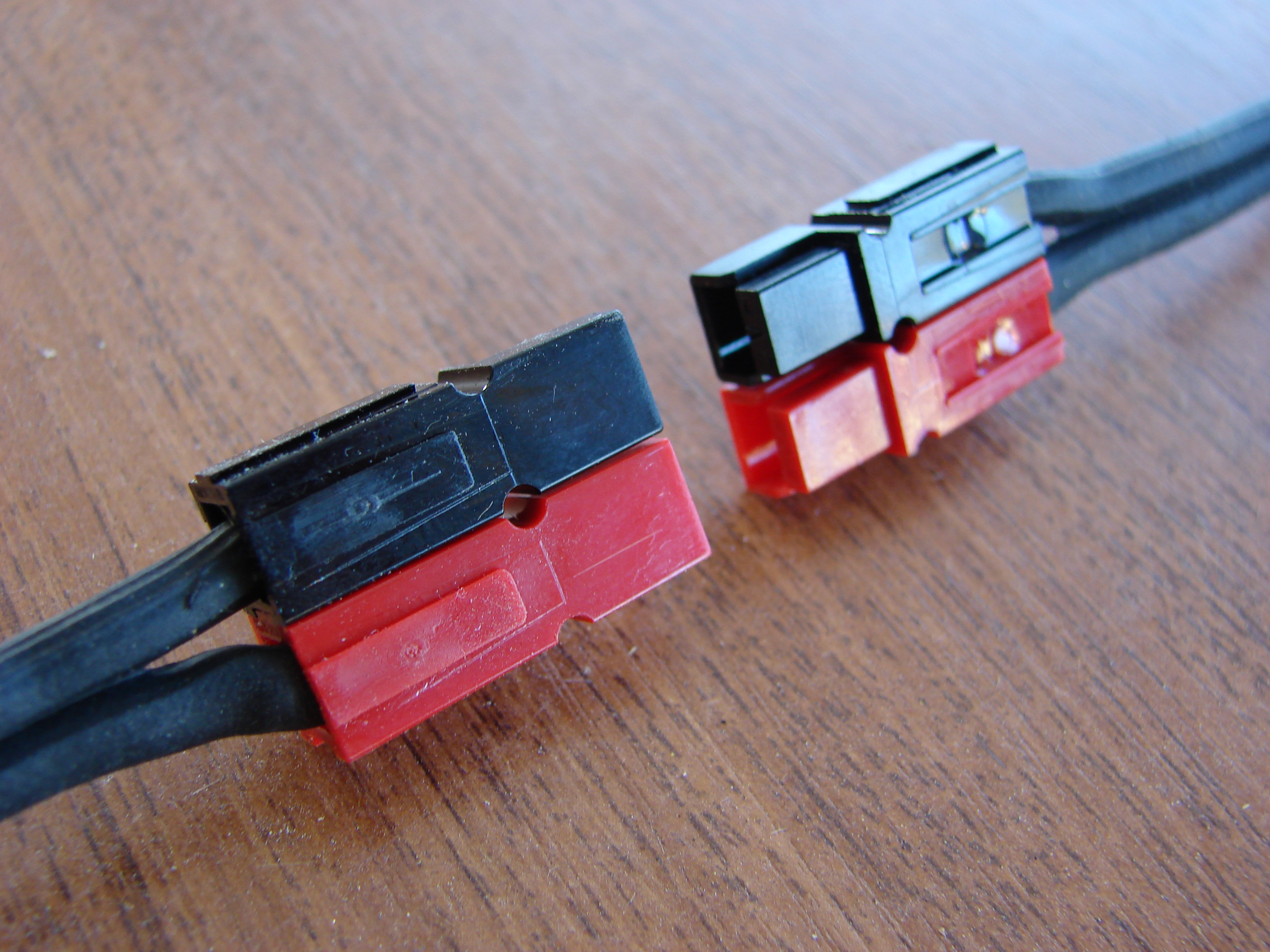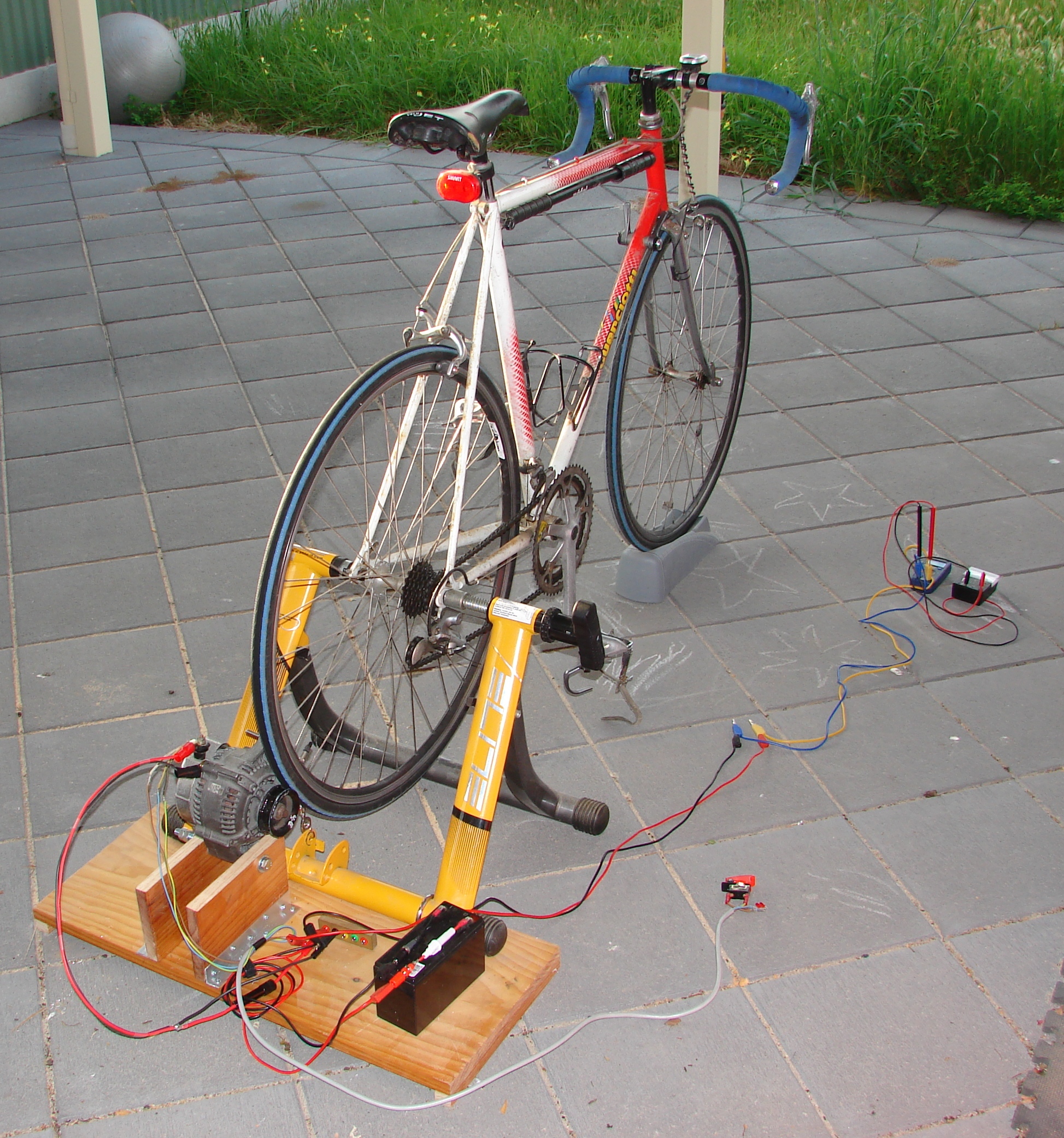Greetings.. over the last couple of months, thoughts and materials have been gathering in order to build a pedal powered electric power supply, which could be used, amongst other things to recharge batteries and to power an amateur radio transceiver.
I am pleased to announce that the first stage of construction, getting an vehicle alternator to reliable produce power, has been achieved.
Pedal Powered Alternator – Stage 1
Stage 1 involved getting the alternator mounted properly and generating a stable output voltage.. which it did at 14.7V. This lets the alternator recharge the battery.
What has been constructed?
Step 1 – The alternator and wiring harness.
An alternator from a local used car parts dealer was purchased. I picked up a Toyota alternator for $55 at Gepps Cross wreckers. I started to build up the wiring harness.. it wasn’t really possible to test anything properly as (apparently) the alternator only starts to kick in at around 800-1000 RPM. Some quick calculations indicated that that the racing bike would be able to do provide this (with a direct friction drive with the wheel) at reasonably low speed (6km/h – simulated, it’s on a trainer.) It may be necessary to even further reduce the ratio by fitting a larger wheel to the alternator. This would also help with the traction if it was something like a go-cart or small sack truck wheel.
When obtaining the alternator, it is definitely worth asking for the connecting plug at the same time. Mine was stripped from a wreck at the wreckers, and supplied for no cost, which was quite handy. (I did have to go back the day after to ask about getting it though.)
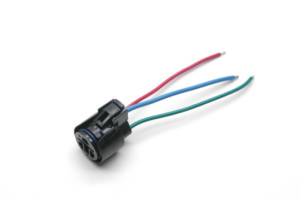
The alternator was connected up like this… no charge lamp was used at this stage.
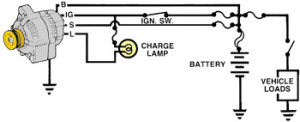
Step 2 – Mounting.
The mounting for the alternator was the biggest concern. It needed to be sturdy enough to hold the alternators weight and allow it to be held against the bikes tire and be rigid so that there weren’t issues with vibrations as the alternator and the bike wheel were spun up.
A mount made out of welded steel would have been possible, but an old pine board was also handy and fitted the bill quite well. A length was cut to go under the rear struts of the bicycle trainer, and the couple strips of wood were added for feet. The trainer was bolted down to this with a couple of 50mm stainless steel u-bolts.
A stand for the alternator was built from couple of pieces of pine board, length ways. The alternator was mounted by drilling a hole through the boards for a bolt, which allowed the alternator to pivot against the rear wheel of the bike. These boards are held in place by two full length brackets made from aluminium L sections, cut and drilled to suit.
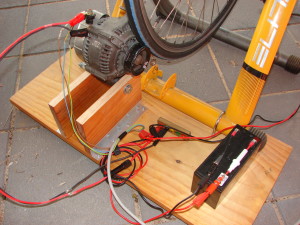
The final piece of the mounting is an eye-bolt through the other mounting hole on the alternator and a toggle connected to the base of the bicycle trainer stand (where a suitable hole had already been placed), which holds the alternator against the tire.
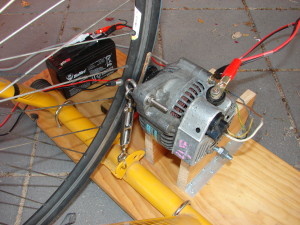
Step 3 – Assembly and Testing
Everything was assembled and a couple of trial hand cranks were done to run the alternator up. Everything ran smoothly without the alternator energised to produce power.
With the ignition switch on, but with the alternator just resting against the bike tire, the surfaces would slip as the alternator started producing power. This was solved by adjusting the tension in the toggle bolt holding the alternator against the tire.

While peddling, the alternator produces 14.7-14.8V, and can be used to charge the battery that is currently attached.
What next?
The next step is to see what the system is like generating power for various loads.. and then use it to produce power for real world applications.
I plan to have it on display at the upcoming “Wireless Institute of Australia” National Field Day (aka. national publicity day)on the 23rd of October outside of the Bunnings at Parafield airport.
Update
The local “WIA National Field Day” event ended up being held in the Salisbury Town Centre (2010) and the generator was successfully demonstrated to work well recharging a battery for a Amateur radio.
This article was originally published at “MawsonlakesOrg” on Blogspot
